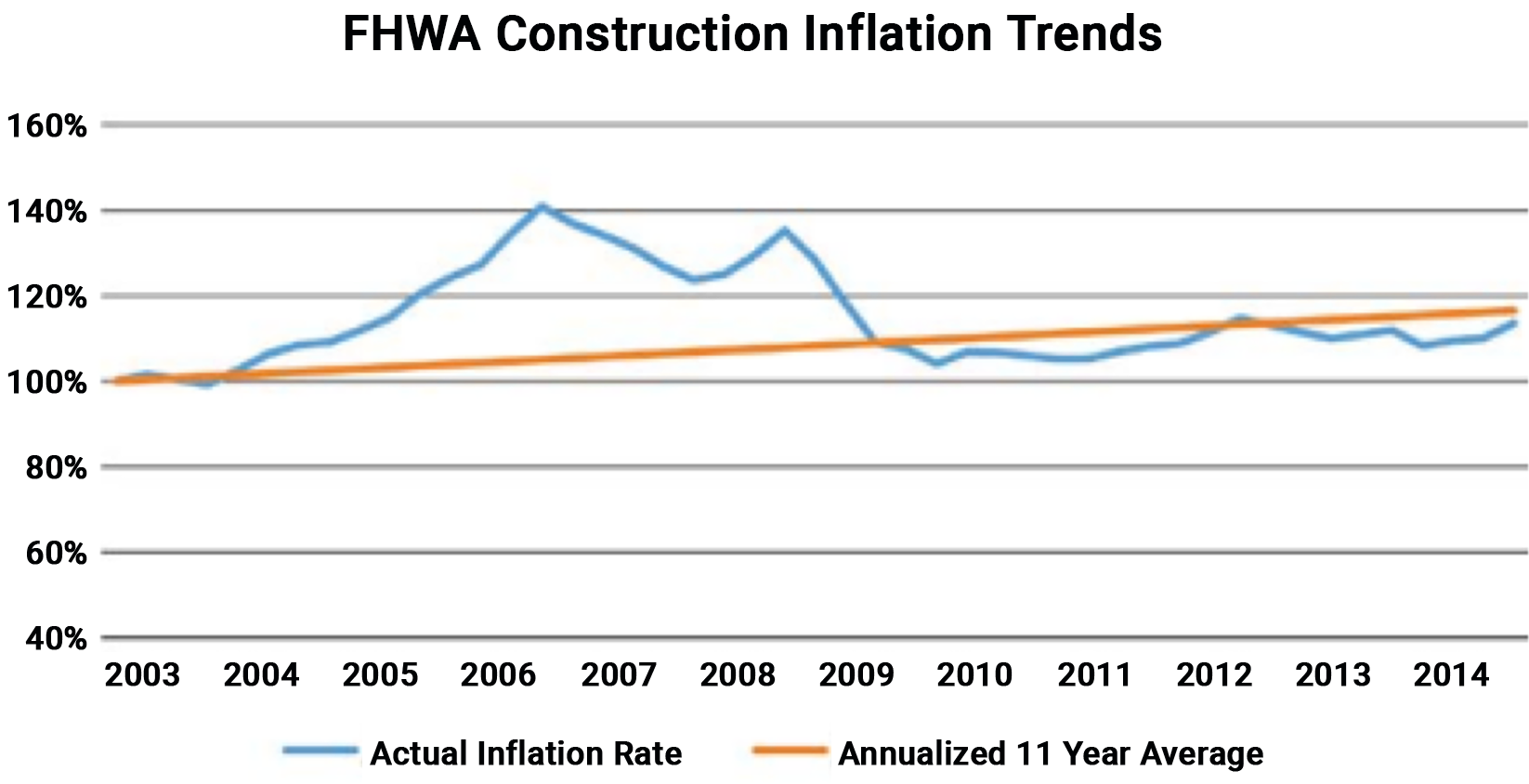6.3.1.2
Overcoming Challenges Associated With Trend Analysis
It can be difficult to predict future trends based on historical data, especially when there is a significant amount of variability occurring. For example, the FHWA construction inflation trends shown in Figure 6.3 illustrate how variability can have a significant impact on historical trends. In this example, the FHWA National Highway Construction Cost Index has a compound annual growth rate of 1.16 percent between 2003 and 2014. However, between 2005 and 2008, significant inflation occurred. An agency preparing a construction estimate in 2006 would look very different than one developed in 2003 or 2013. To address this type of challenge, the agency can include any assumptions made, when preparing an estimate based on trends with significant variability. It could also conduct a sensitivity analysis to better understand the consequences of the potential variability.
Figure 6.3 Actual and Compound Average Annual Construction Inflation Trends between 2003 and 2014
Source: FHWA. 2015. Managing Risks and Using Metrics in Transportation Asset Management Financial Plans.
Another challenge in using trends is the fact that past performance does not guarantee future results, especially if there have been changes in the condition impacting performance. For example, a bridge may have performed well for years, but changes in traffic volumes and weights could significantly increase the rate at which the bridge deteriorates. Similarly, the use of new bridge deck materials may last longer than the materials used previously. To address these challenges, an agency may find it beneficial to modify historical models to better reflect current and future conditions. Monitoring performance over time will allow the agency to develop new models specific to changes in traffic or materials.
A third challenge arises in trying to develop trends for expenditures in work activities when there are inconsistencies within the agency as to what treatments are included in each category. This typically occurs with work activities related to maintenance and preservation. For example, the categorization of a treatment may vary depending on whether the work was performed by inhouse forces or a contractor. Another example is when a preservation treatment is used as a stop-gap improvement on a project that needs more substantial repairs. Again, the actual performance of the stop-gap improvement could be much shorter than the application of that same treatment when used as a preservation improvement. The absence of standardized work categories or the use of stop-gap treatments consistently across the agency can make it difficult to show meaningful performance trends for these types of activities. As a result, it can be difficult to show the benefits associated with these treatments. The solution is to define treatments consistently throughout the agency and to ensure that the treatments are being used as expected.
